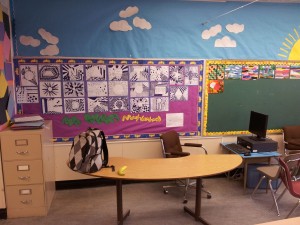I was fortunate enough to experience a positive academic career for the majority of my childhood schooling. I learned that caring for students helped to foster trust and motivation. This positive environment helped me develop academically and as a individual. It also provided me with a solid basis from which I can expand my own strategies as a teacher. After all, it is your past experiences that determine who you are as an individual now.
I was privileged enough to have teachers who valued and cared for their students and who made an effort to act for the benefit of the students. Students were not only in class to learn the educational material and prescribed learning outcomes, they were also there to learn how to effectively function in society. My teachers wanted to facilitate this learning to produce well rounded individuals. I believe that this is an important part of learning while growing up and it is one of the things that directed me towards a career in teaching. If teachers do not help students to become well rounded individuals, we are doing them a disservice and not acting in their best interests. I have learned, from the example set by my past teachers, that teachers must value and care for their students in order to best aid their learning.
I grew up with a healthy respect for teachers. Again, I was quite fortunate in that most of my teachers embodied the ethical and honest behaviour that one would expect from a potential role model. I learned that teachers must live up to a certain standard in their teaching. I believe that this is quite a perceptible quality for students to see. While in school, I most appreciated and respected the teachers who were honest and sincere with not only myself, but with all of their students. This would hold true also for when I would occasionally encounter one of my teachers outside of the school setting. I believe that teachers must understand the fact that they are being judged on their conduct both in and out of the school. The teachers I saw outside of school knew this and encouraged me to conduct myself likewise. Additionally, this point was really emphasized to me during my practicum by my Student Advisor. If you are not honest with your students and your peers, they will have no reason to respect you as a teacher or build any sort of academic relationship with you. I could immediately see the positive relationship that he had with his students even at the beginning of the year and so during my ten week practicum I made every effort to embody these qualities. I learned that, while it is not always easy, conducting yourself with honest and ethical behaviour go a long way in ensuring a basis for quality educational relationship with your students that help to facilitate their learning. Without honest and positive behaviour, teachers would not be able to most effectively impact their students for the better.
While in my practicum, I witnessed the value of having community support for the school. Supportive parents and guardians are a beneficial resource to help support not only learning, but also organization and school functions. While in elementary school, I remember seeing parents of my fellow classmates accompany us on field trips but I did not truly comprehend their role. Presently, now that I have completed my practicum experience, I can see how parent or guardian involvement in functions, like field trips, helps to facilitate the learning and support on students. Much like how it is important for teachers to take a vested interest in their students lives, parent involvement helps to keep them up to date with their child’s learning experience. I shows the student that their parents or guardians also take an interest in this learning material. Community involvement also helps teachers with organization and facilitation of many activities in the school. Activities, like the graduation ceremony, benefitted greatly from the involvement of the community and would have suffered without their support. Lastly, good communication with parents and guardians helps to maintain a positive academic relationship with them which ultimately benefits the student.
I believe that life experiences are resources to be drawn upon for teachers both new and experienced. Nieto states that, “…teachers bring their entire autobiographies with them: their experiences, identities, values, beliefs, attitudes, hangups, biases, wishes, dreams, and hopes.” (Nieto, 2003, p.24). We can reflect on teaching strategies that may have or have not worked to help us learn and adapt them to our needs. I was fortunate enough to experience a positive elementary schooling which helped me to decide to give back in a similar manner. Reflecting on these experiences now allows me to realize that many of my teachers genuinely cared for, not only myself, but for all of their students. They set an exquisite example for me to learn from and gave me experiences that will help me all the way through to own teaching career.
References
Nieto, S. (2003). What keeps teachers going? New York: Teachers College Press.



